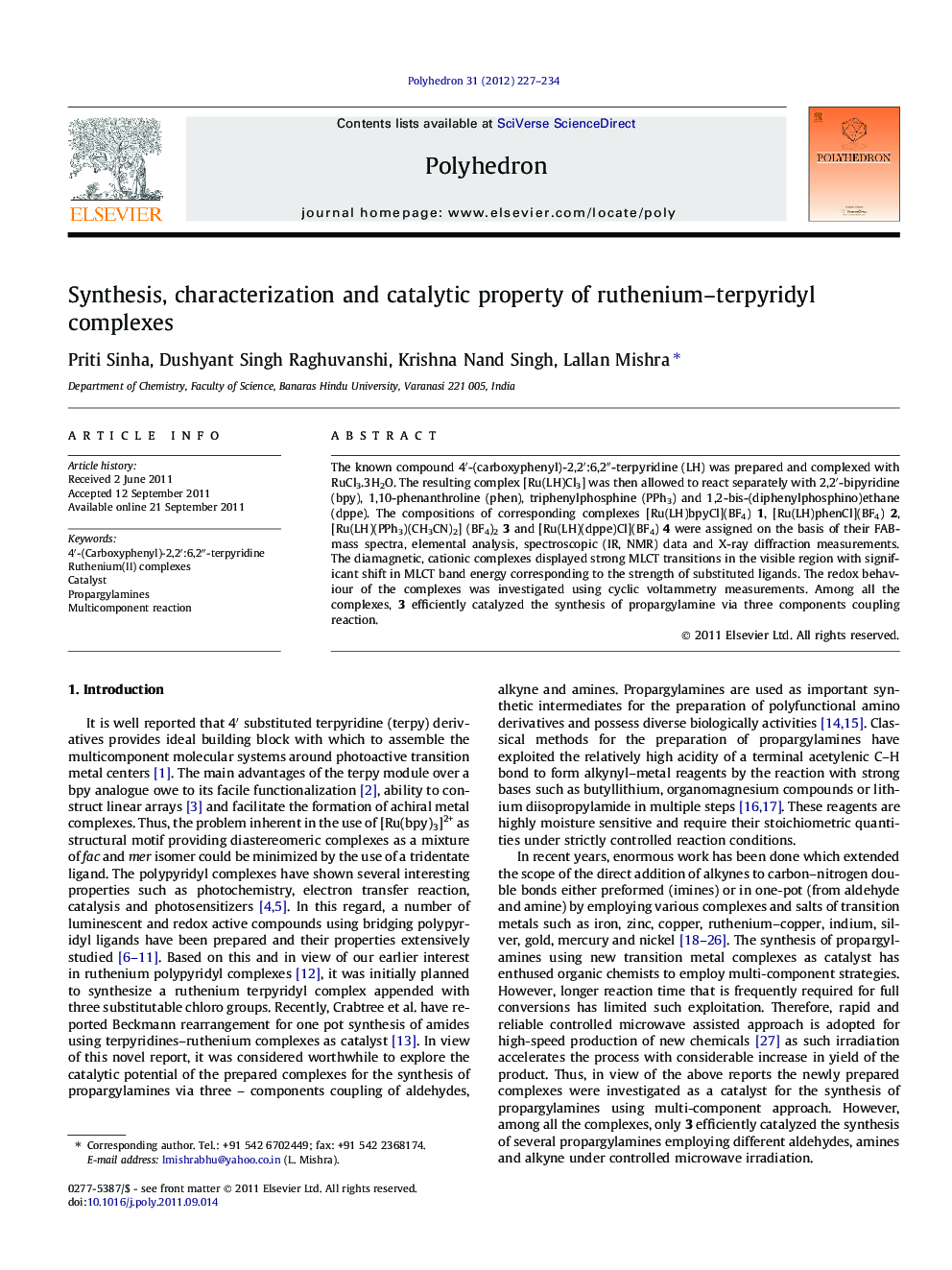| Article ID | Journal | Published Year | Pages | File Type |
|---|---|---|---|---|
| 1338182 | Polyhedron | 2012 | 8 Pages |
The known compound 4′-(carboxyphenyl)-2,2′:6,2″-terpyridine (LH) was prepared and complexed with RuCl3.3H2O. The resulting complex [Ru(LH)Cl3] was then allowed to react separately with 2,2′-bipyridine (bpy), 1,10-phenanthroline (phen), triphenylphosphine (PPh3) and 1,2-bis-(diphenylphosphino)ethane (dppe). The compositions of corresponding complexes [Ru(LH)bpyCl](BF4) 1, [Ru(LH)phenCl](BF4) 2, [Ru(LH)(PPh3)(CH3CN)2] (BF4)23 and [Ru(LH)(dppe)Cl](BF4) 4 were assigned on the basis of their FAB-mass spectra, elemental analysis, spectroscopic (IR, NMR) data and X-ray diffraction measurements. The diamagnetic, cationic complexes displayed strong MLCT transitions in the visible region with significant shift in MLCT band energy corresponding to the strength of substituted ligands. The redox behaviour of the complexes was investigated using cyclic voltammetry measurements. Among all the complexes, 3 efficiently catalyzed the synthesis of propargylamine via three components coupling reaction.
Graphical abstractA terpyridyl Ru(III) precursor is complexed with several σ and π donors and resulting Ru(II) complexes are characterized using spectroscopic and X-ray diffraction techniques and complex 3 showed catalytic activity leading to the multicomponent formation of propargylamines.Figure optionsDownload full-size imageDownload as PowerPoint slideHighlights► Ruthenium(II) terpyridyl complexes containing co-ligands are prepared and characterized. ► Complexes are characterized using spectroscopic and X-ray data. ► Multicomponent formation of propargylamines is catalysed by complex 3. ► The complex 3 contains triphenylphosphine and acetonitrile ligands beside terpyridyl ligand.
